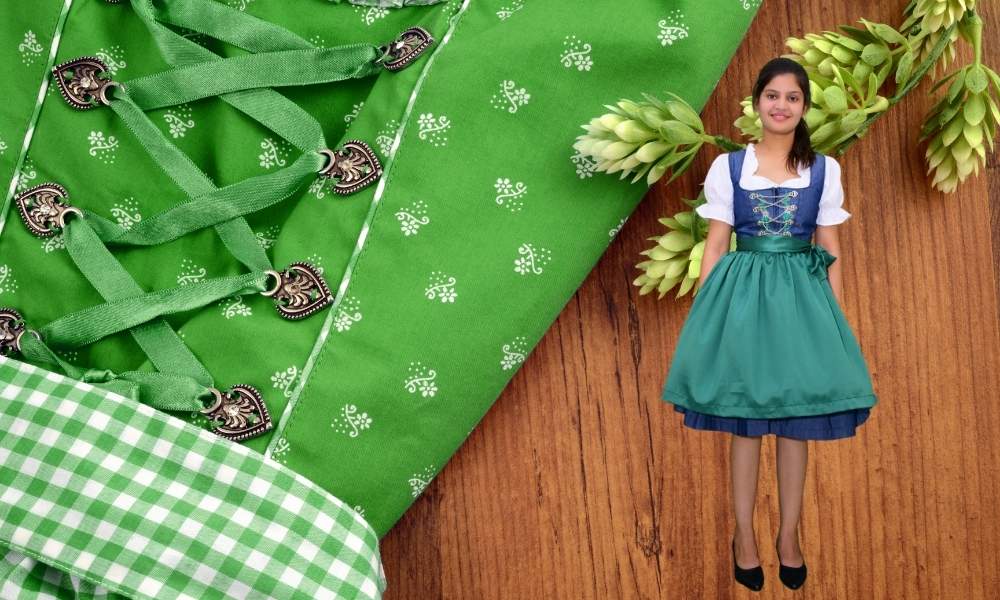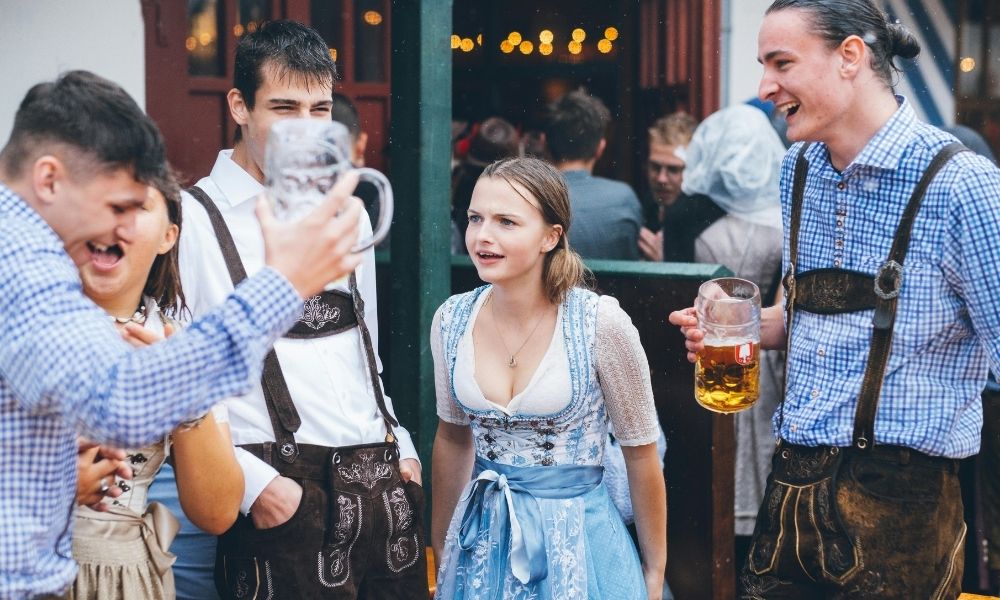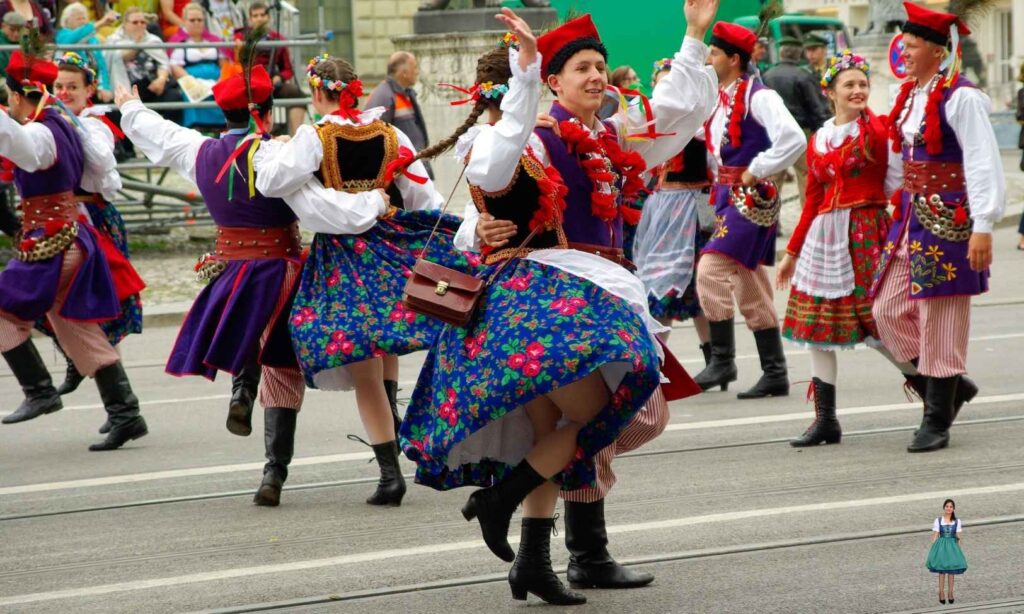dirndl authentic introduction
The dirndl authentic is a traditional symbol of a föyer and festivty as, an traditional costume for the women and girls of the dinstict of Bavaria and others countries in Europe.
The dirndl authentic was invented in the eighteenth century though though for centuries, the dress has undergone a change; yet the essence of it has not changed at all hence retains the full history, tradition and culture of the people of this region and period. This article focuses on explaining what an authentic dirndl is, its components, and how the modern wearer should strive to stay as close to an authentic piece as possible.

History of the dirndl authentic
This costume can be traced back to working outfits of Alpine women, and its modern form appears in the latter half of the nineteenth century, thanks to the emergence of tourism in that area.
Initially, the dirndl was used by peasant women just as shirt and trousers are used by men as clothing for work such as farming and cleaning. The outfit gradually changed over the centuries and is now worn by Bavarian and Austrian people at festivals, in particular at Oktoberfest. Today, several millions of people are wearing dirndl, which are embodying the real essence of Bavarian traditions and values.

Original Attributes of a dirndl authentic
The traditional dirndl is composed of several elements, which vary in some details depending on regional traditions:
1. Blouson (Blouse):
The upper part of body is enclosed in a white, brightly embroidered blouse. Blouson can be made from silk, cotton or linen but choice of the material depends with the occasion at which it will be used.
2. Bodice:
Form fitting bodice with a shape of a corset, very hug the figure with narrow waist area. This also features an apron to cover the bodice which also help to hold the bodice in place.
3. Dirndl skirt:
The blouse is a tight fitting top and the skirt element is an important element of the traditional dirndl and is as a rule semi-circular and flared, reaching the knee or slightly below it. It also has a a petticoat that gives volume and an elegant touch to this dress that gives supporting to the dress covering the skirt.
4. Apron:
Black or red, richly embroidered with flowers, patterns, or ornaments are the ‘colours’ for the apron part of the dirndl. It is another garment piece that drapes over and fastens at the front of the bodice and gives a cuteness to the wardrobe.
5. Trachtenbinde (Sash):
A common trachtenbinde is used to strap the apron right around the waist. The velvet, satin, or even embroidered cotton sash can be colored so it will match the general appearance of a dress.
6. Accessories:
An original ornament of the head, the Wittelsbacher Knoten, supplements a traditional dirndl authentic; Other accessories are necklaces, bracelets, earrings. In fact, Bavarian shoes, such as ‘Lederhosen’ or ‘Schnürsenkel’ are part of a traditional Dirndl.
The Real Fabric of dirndl authentic and Realistic Embroidery
Also important in terms of making the presence of the authentic dirndl authentic known is the usage of the expensive but equally heavy yet very wear resistant fabrics, which in themselves go back to the clothing’s ancient roots. Blouse and bodice mostly are made of light fabrics such as silk, cotton and linen of which the traditional fabrics used in dirndl clothes are, due to the hot climate of south Germany and Austria.
Now the skirt and the apron may have different thickness and density, be of velvet or a strong cotton material or whatever the owner will wear them. Like any other piece of genuine folk wear, the embroidery on a dirndl is very important because it reveals the intricacy of workmanship inherent to the custom of wearing the attire in Bavaria.
The blouse, bodice and the apron take on look and feel of the wearer’s cultural heritage, aided by the floral patterns, Celtic designs and the use of motifs of regions incorporated in the blouse, bodice and the apron.
Modern Features of Authenticity Maintenance
In the existing world, globalization is the order of the day, dirndl dressing is required only in the Germany and Austria world not otherwise. But then it becomes difficult not to lose the true image of the dirndl while being produced en-masse, and even being turned into a business commodity.
Consumers should consider quality scarfs and shawls, detailed embroidery of shirts, blouses and skirts and more importantly, traditional pattern while choosing dirndl outfits.
Secondly, one should also think about buying ‘handmade’ such as authentic Bavarian outfits which people have spent time researching to design these unique pieces and sell locally.

Conclusion dirndl authentic
It is not just about the body being clothed, rather it clothes the body together with the spirit, community of the region and with identity. Wearing an original dirndl authentic, a woman can fully enjoy the benefits that come with being part of wonderfully a masterpiece of the modern culture being a successful Bavarian pro.
